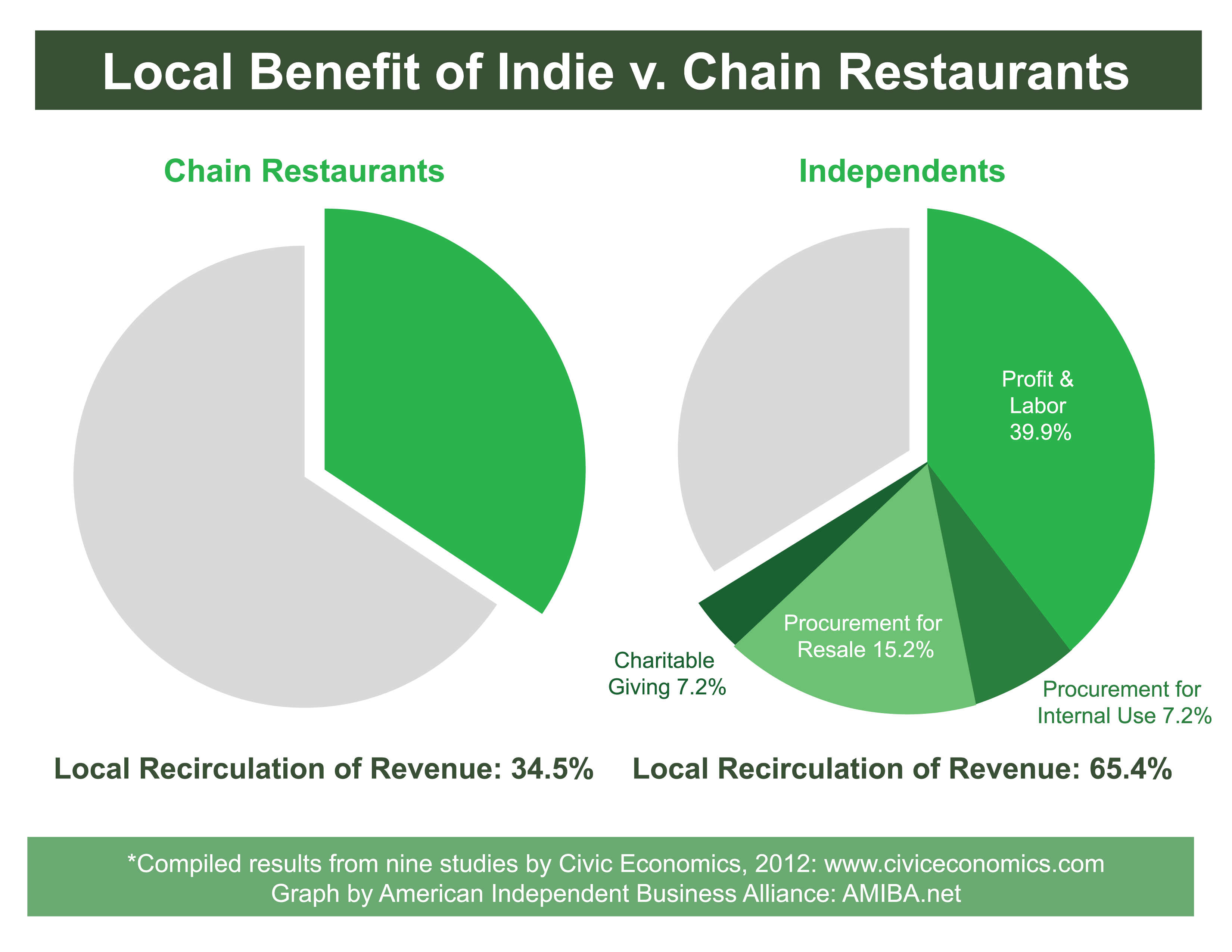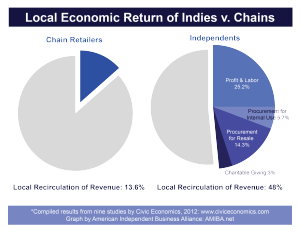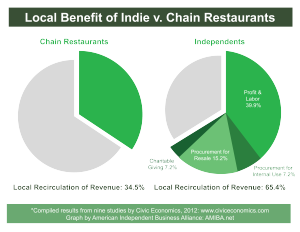The Local Multiplier Effect
An article recently published by the American Independent Business Alliance (AMIBA) shed light on the importance of small businesses communicating the positive impact they have on local economies. Referenced as the “local economic multiplier effect“, the effect is a result of a greater percentage of revenue circulating through a local economy when money is spent at local businesses.
Research from Civil Economics states that the impact can come from three factors: direct, indirect, and induced impact.
Direct impact occurs when money is spent by local businesses to operate the business.
Indirect impact occurs when money spent by a local business at other local businesses re-circulate.
Induced impact occurs when consumers such as employees, business owners, and others spend their money in the local economy.
Such studies have taken place in Austin, Chicago, and Grand Rapids. On average, 48% of each purchase at a local business recirculated locally while less than 14% of a purchase at a chain business recirculated. It is important to note that percentage values do vary by the size of the local economy. The information garnered in these studies is that purchases through local business do contribute more funds towards creating jobs and wealth in a local economy as opposed to chain-operated businesses.
As the “Shop Local” movement continues to gain momentum across the country and in Raleigh, it is important that local businesses should take advantage of these findings. They can calculate Raleigh’s “local economic multiplier” for various supplies to determine the amount that is returned to the economy. It is also a good idea for businesses to promote these findings in an accurate yet memorable manner so that consumers are driven to spending money locally. Using advertisements and messages that are heavily ridden with percentages and statistics and are not linked to reliable sources are less likely to remain in consumers’ minds for long.




